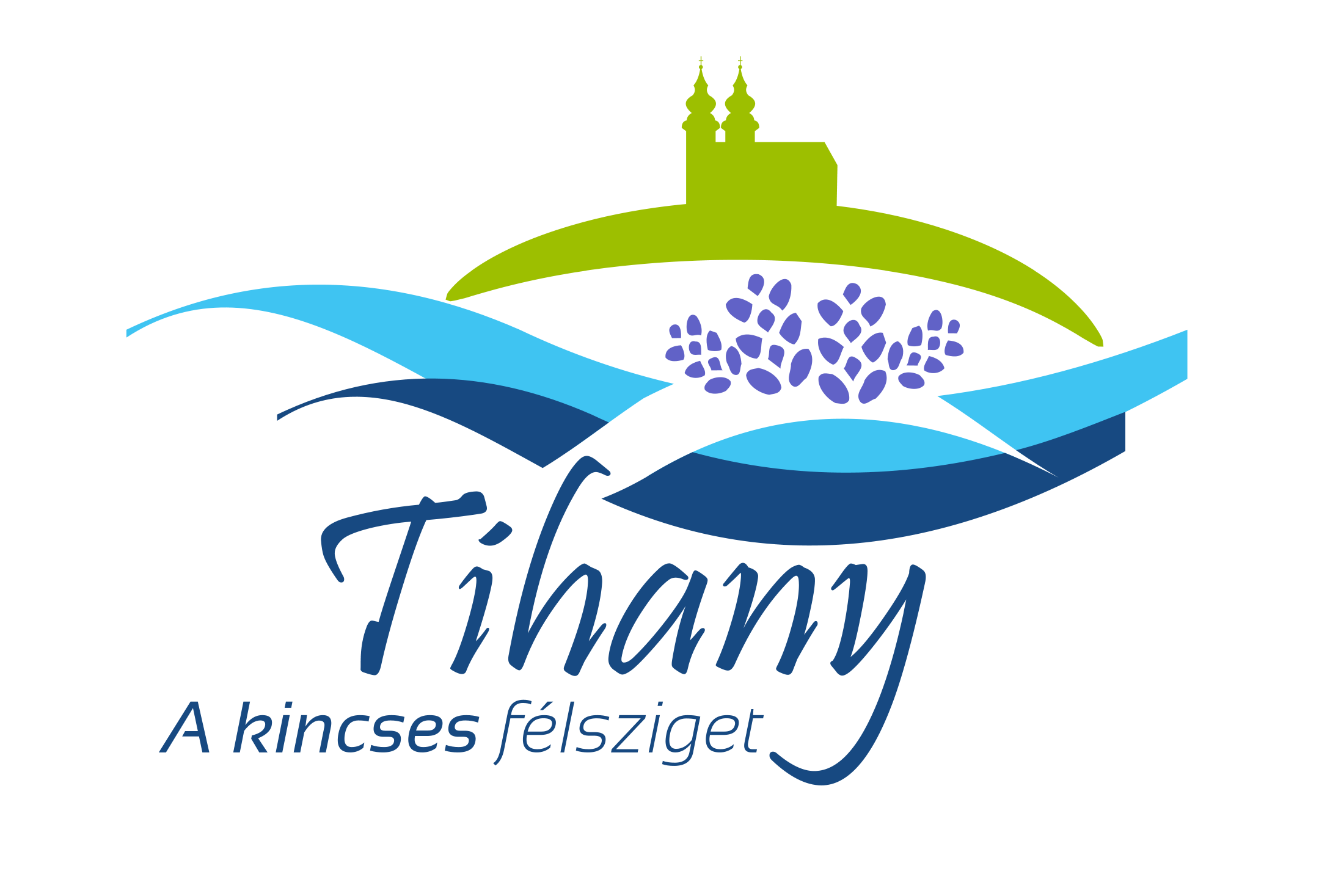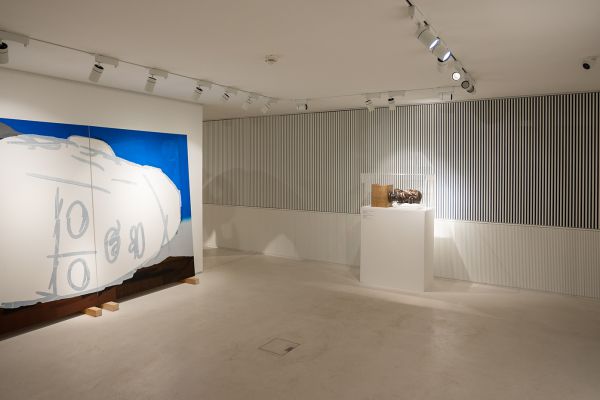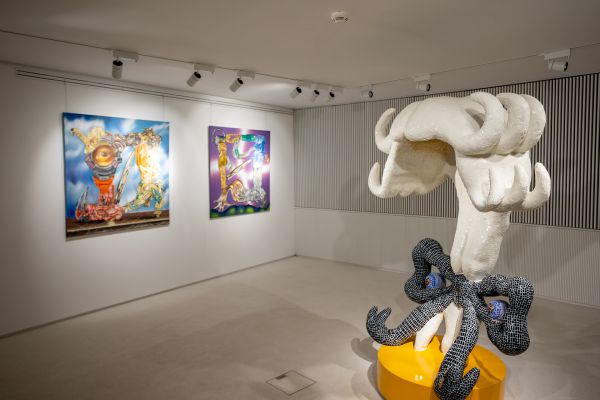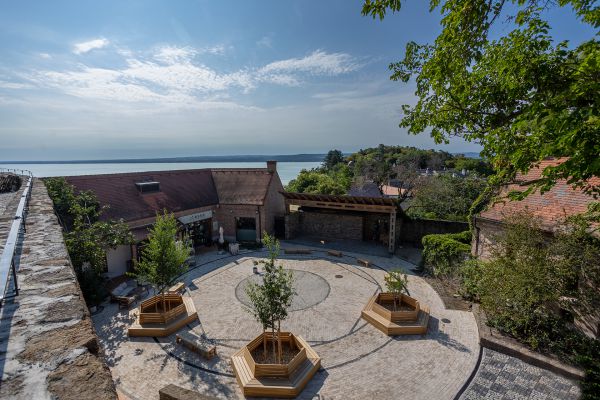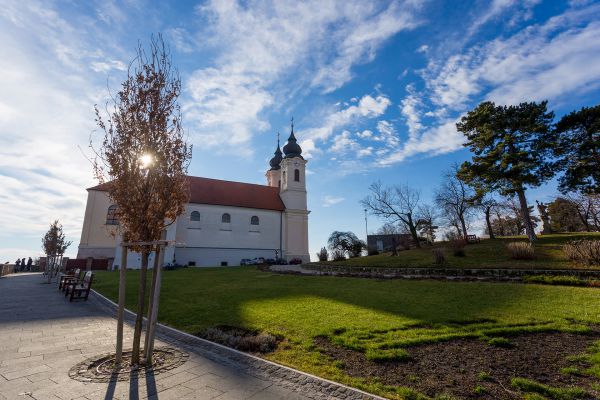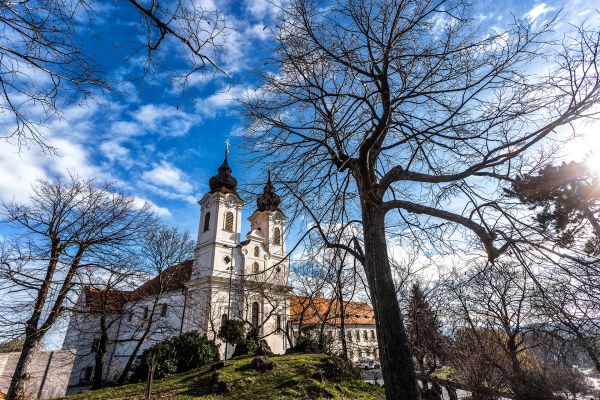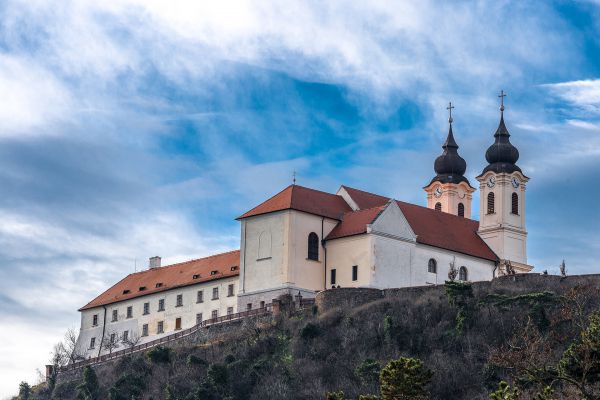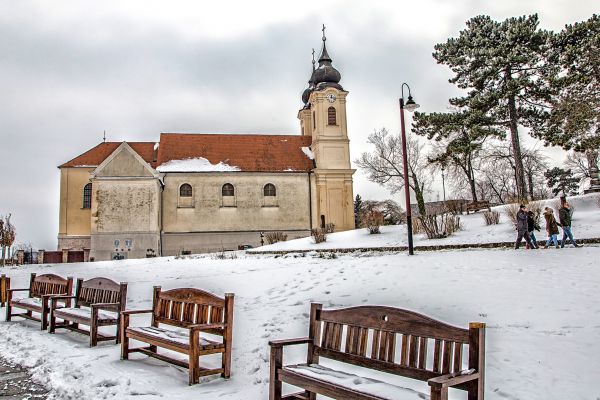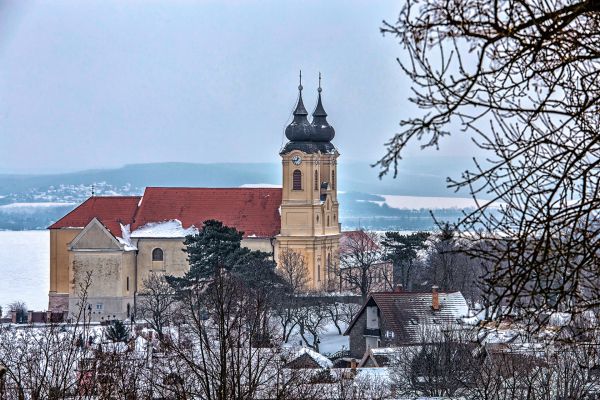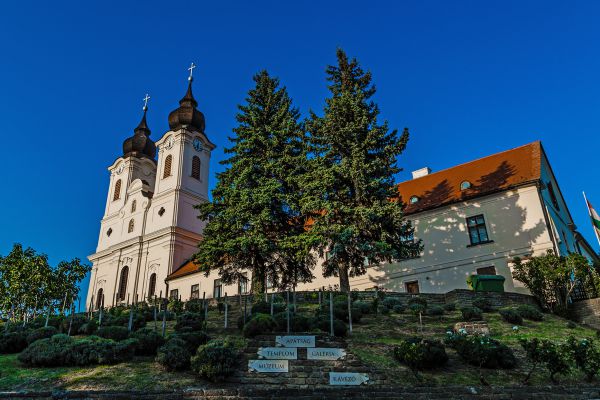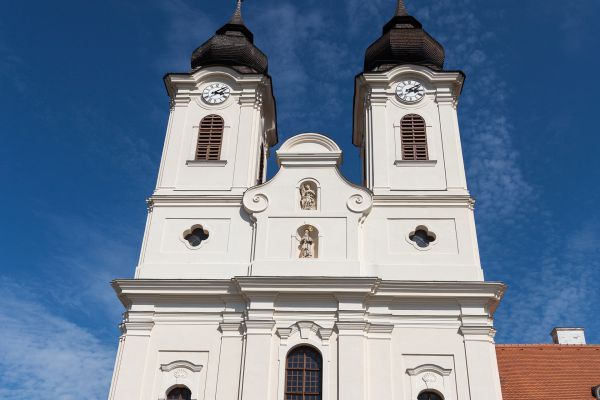The history of Tihany goes back to prehistoric times. One of Hungary's oldest hill forts is located here, traces of which can hardly be found today. The village began to develop when András I founded the Benedictine Abbey in 1055, which also served as the founder's final resting place, and his grave can still be seen in the abbey's crypt. András I started the construction of the church in Tihany to commemorate the victo-ries and to build his family tomb.
The construction was completed in 1055, when the foundation letter was drawn up, which is the oldest surviving original document in Hungary. It also contains the very first coherent Hungarian sentence: "feheruuaru rea meneh hodu utu rea", i.e.: on the war road to Fehérvár. In addition, this certificate of incomparable value contains nearly a hundred Hungarian words, suffixes, and adjectives. The church was built in honor of the Virgin Mary and St. Ányos.
We do not have much information about the medieval Tihany church. From the existing ones, it can be concluded that it was single-aisled, without a tower, with a straight sanctuary closure. We know about the monastery founded by András I that they rebuilt it in the 13th century then it was renovated in the late Gothic style in the 15th century. During the Turkish wars, it was transformed into a fortified place and, together with the estates, came under military administration.
It brought a real change in the life of the abbey when the archimandrite of Pannonhalma ap-pointed Grasso Vilibaldo as the abbot of Tihany. The new church was built on the foundation walls of the Middle Ages. They also started building a new convent, bigger than the previous one. The work progressed slowly, the building was finally completed in 1735, but a year later it lay in ruins again; On November 26, 1736, a huge fire broke out and everything ex-cept the walls was destroyed. Abbot Grasso immediately began to restore the church, but most of the work was left to his successor, Ágoston Lécs, who was appointed abbot in 1740.
By 1754, the church built in the Baroque style was completely completed. It was 46 meters long, 16 meters wide, and its towers were 35 meters high. The building is 80 meters above the level of Lake Balaton. Even today, it stands out from the built-in hillside, and in the 18th century it could have looked even more imposing on the barren hill. The abbey, which was state-owned before the regime change, was returned to the Benedictine order in 1993.
The artistically elaborate furnishings of the interior of the church were made by Sebestyén Stuhlhof, a master from Austria, between 1754 and 1779: the altars, the pulpit, the organ stand, the gallery grill, the stalls of the oratory and the furniture of the sacristy.
The crypt of the king (András I), which is under the sanctuary of the church, has remained in its original form. The 9-10 meter wide room is divided into three small naves by three-three carved cylindrical columns. The inner part of its four column legs was cut off, probably dur-ing the construction of the king's tomb.
The church, like the old churches, is aligned with the rising sun. Over the centuries, it has been the subject of destruction and revival several times. The tomb of the founding king, András I, is a precious memorial for today's Hungary. The sub-church - King's Crypt - is one of the most valuable medieval buildings in today's Hungary. The richly decorated baroque church is a witness to the era that speaks of revival after destruction. The church is not just an art-historical monument, it is a real sacred place, a spiritual center.
 English
English  Čeština
Čeština  Nederlands
Nederlands  Polski
Polski  Magyar
Magyar  Deutsch
Deutsch 